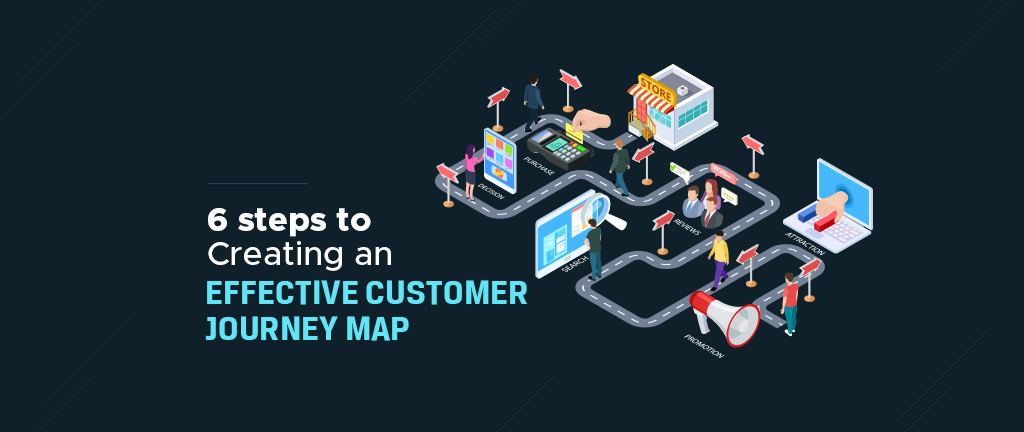As technology undergoes rapid change, customer expectations are also evolving. The term fast and quick service has gained a new meaning. Customers are increasingly prioritising experiences while choosing a brand.
As per a Forrester study, customers are 2.4 times more likely to stick with a brand when their problems are solved quickly. Likewise, a survey result shows that positive experiences throughout the customer journey will encourage 65% of respondents to become long-term customers of a brand.
While customer experience is as important as ever, it is becoming increasingly complex, with customers using multiple channels to communicate with organisations. Customer journey mapping is thus gaining relevance to provide a seamless experience across various touchpoints.
What is Customer Journey Mapping
A customer journey map is a visual representation of the customer’s interaction with your company. It documents and shows each phase of how a customer moves through his communication, including all touchpoints from how he became aware of the company to how he made the purchase, to retention.
Customer Journey Mapping proves extremely useful in understanding customers’ needs and emotions at different points during the interaction with the company. These insights can then be used for crafting and delivering positive customer experiences.
The Benefits of Customer Journey Mapping
In today’s era, when we need to constantly assess, revisit and redefine customer experience, a customer journey map proves to be a powerful tool to assess the current state, understand any delay or lags and define the future state.
If done right, a customer journey map helps to:
1. Identify and eliminate process waste and inefficiencies to provide desired customer experience
2. Analyse and understand lags in low-rating customer processes
3. Identify handoff points to increase accountability
4. Eliminate interdepartmental silos and close gaps
5. Define experiences as per a specific touchpoint
6. Identify automation opportunities to improve customer experience
Creating an effective customer journey map
Follow the below six steps for creating a customer journey map:
1. Identify your Objectives
As with any project, you must first start by defining the who, what, why and how to get the desired output. You need to be clear on your requirements with a customer journey map. It’s important to answer questions, such as why you are making a map, what will you analyse, how will you use the insights, and how the success will be measured. Considering and answering these questions right at the start ensures the desired project output.
2. Understand your customer
It’s vital to understand your target customer with details, such as age, gender, profession, lifestyle, challenges, etc. Depending on the audience segment you aim to target, your business may have one or more buyer personas. To avoid a generic journey map, create a journey map for each of the segments you identify.
3. Map the current state journey
Map the touchpoints (website, social media, advertisement, etc.,) through which your customer comes into contact with your product/service. Analyse what’s working well and whether there are any delays, gaps and lags and what’s causing those. Understand customer pain points and sentiments.
4. Understand Customer Expectations
Review and analyse the gap between the current customer process and the expectations of the customers. Understand if there are non-value-adding activities in the process that are impacting or delaying customer service. Check if there are multiple handoff points in the process and if those tasks can be automated.
5. Develop a Future-State Journey Map
With customer expectations and the current journey map in consideration, adjust and fix the problem areas to make the new journey map. Make sure you involve the teams and customers for validation.
6. Improve the Journey
Put the altered plan into action, communicate the change to the team and measure the impact of the change. Journey mapping is not a one-off project, it is an ongoing process that requires continual review and change.
With PRIME BPM, optimise your customer journey by creating end-to-end process maps within minutes and understanding the pain points. Easily analyse low-rating customer processes and get insights into non-value-adding activities, such as repetitive tasks, double handling, will help you fix the time lag in customer service. To explore the full range of customer service features included in PRIME BPM, get access to PRIME BPM Premium at Zero Cost.


